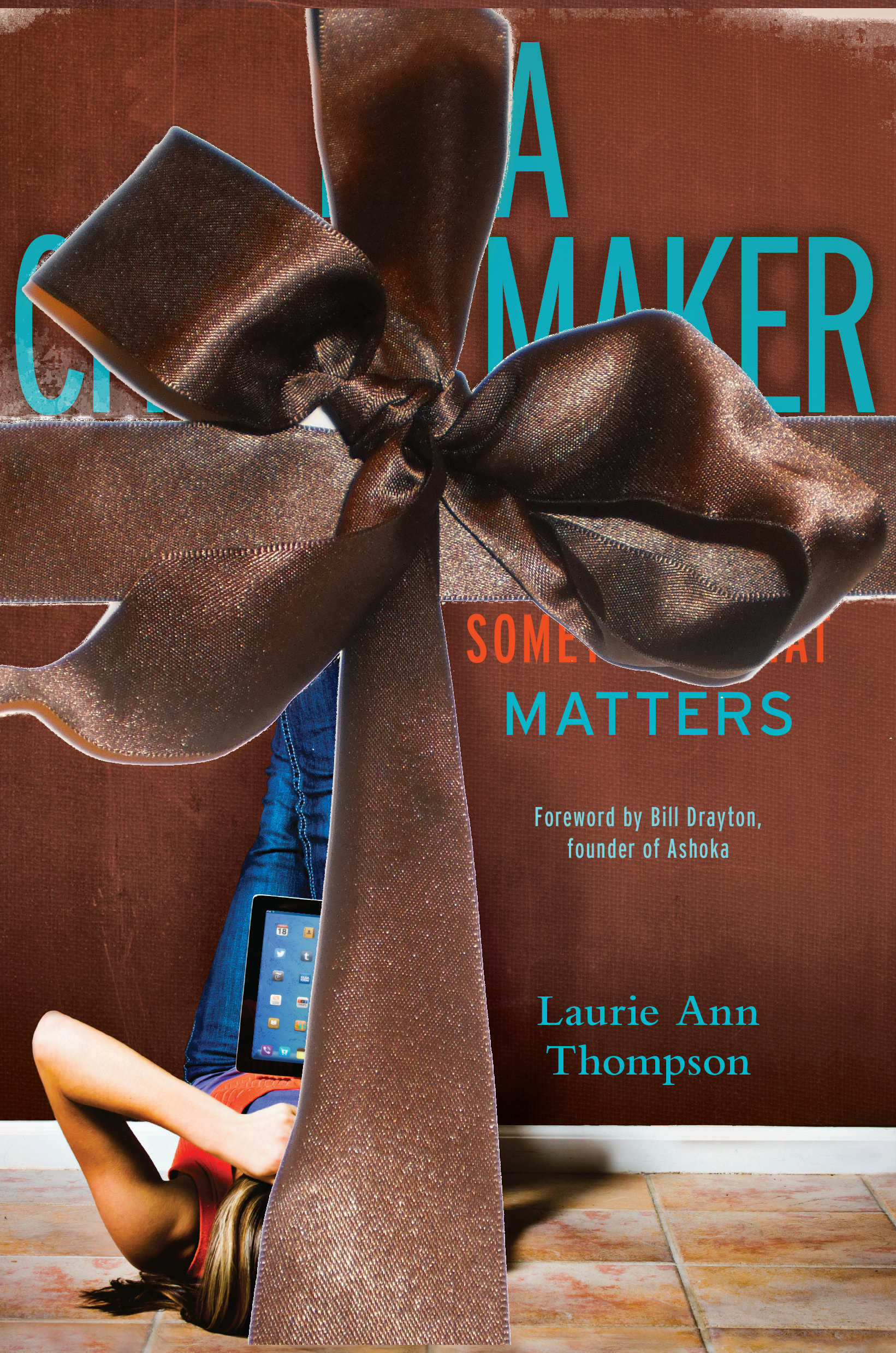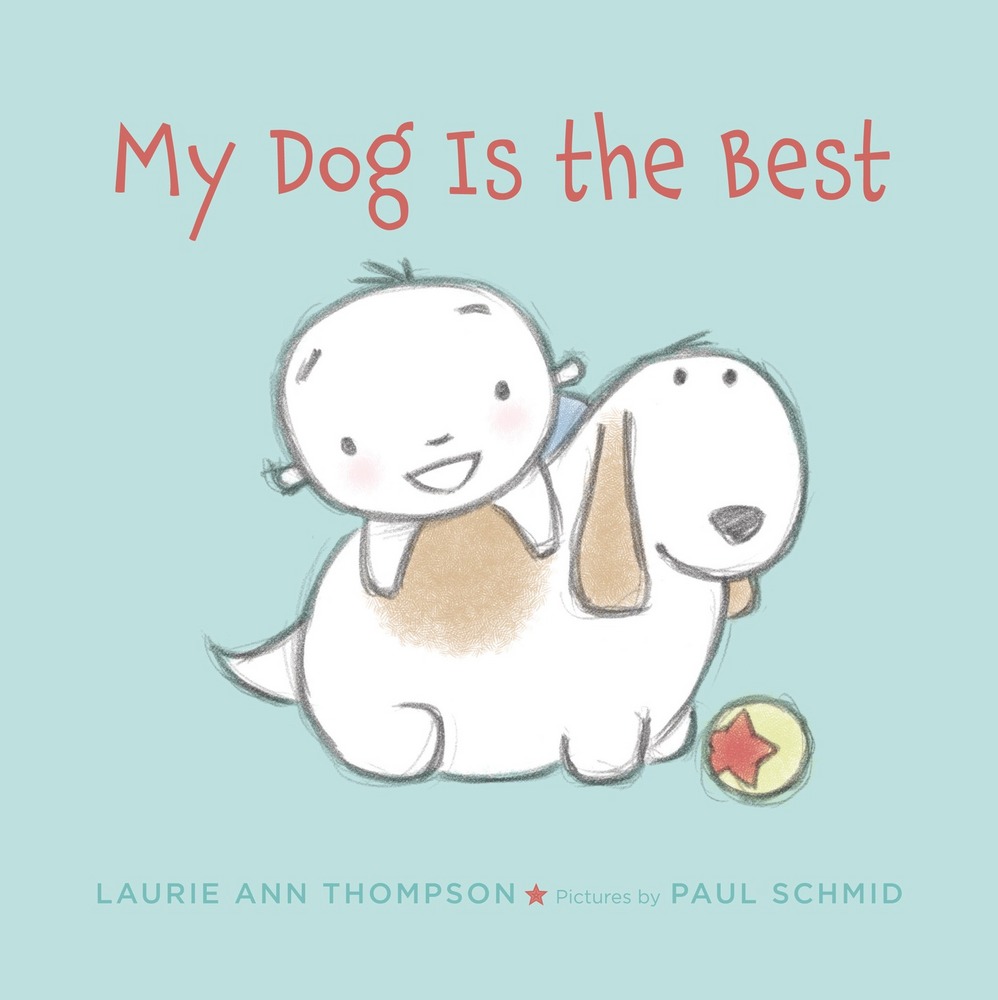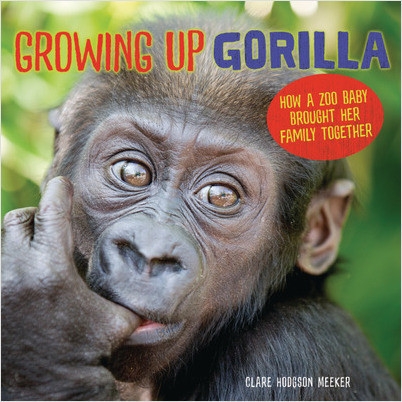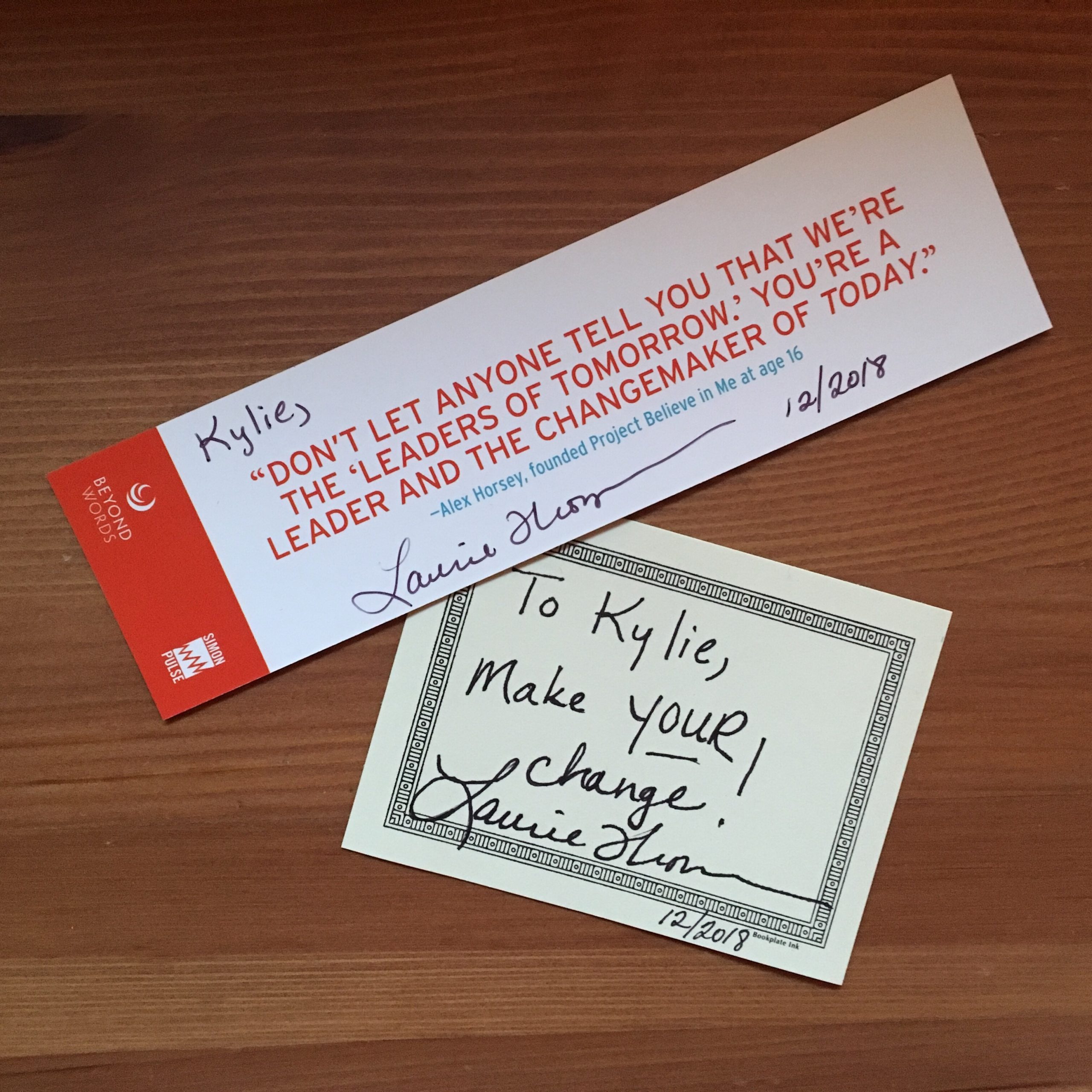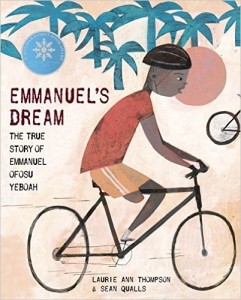
I have some great news to share today! I’m thrilled to announce that Listening Library at Penguin Random House Audio will be producing an Emmanuel’s Dream audiobook edition!! This is super exciting to me for two reasons:
First, I love listening to audiobooks! I listen when I’m walking the dog, driving, doing housework, basically anytime it isn’t practical to have my nose in a book. 😂 So trust me when I say that having one of my books be made into an audiobook makes me squeal for joy and bust out my happy dance!
The second reason, however, is far more important. Emmanuel’s Dream was awarded the 2016 American Library Association’s Schneider Family Book Award for embodying “an artistic expression of the disability experience for child and adolescent audiences.” One of the things that moved me most about winning the award was learning that it meant that a braille edition of Emmanuel’s Dream would be released. That still left some readers out, sadly, and I’ve been dreaming of an audiobook ever since. Having an Emmanuel’s Dream audiobook edition means more access for more people. It means those with vision impairments can hear Emmanuel’s inspiring story of social action. It means emerging readers or readers with learning disabilities such as dyslexia can listen to Emmanuel’s example of perseverance in the face of challenges. It means all children everywhere will have another way to appreciate Emmanuel’s message of accepting everyone’s diverse gifts.
So, it is with great pleasure that I can now say the Emmanuel’s Dream audiobook is scheduled to be released on January 26, 2021, and you even can preorder it RIGHT NOW!
I’m looking forward to working with the team at Listening Library, and I’ll be sure to share further details (like who will be narrating!) as soon as I get them.
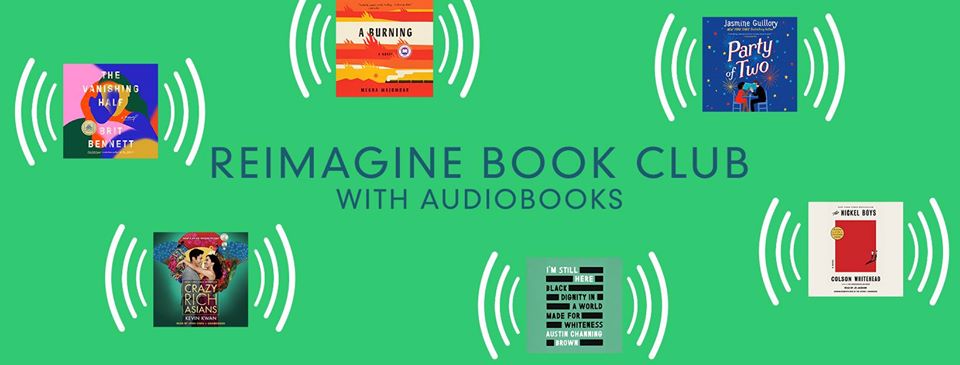
 Laurie Thompson
Laurie Thompson
#AtHome learning using my books
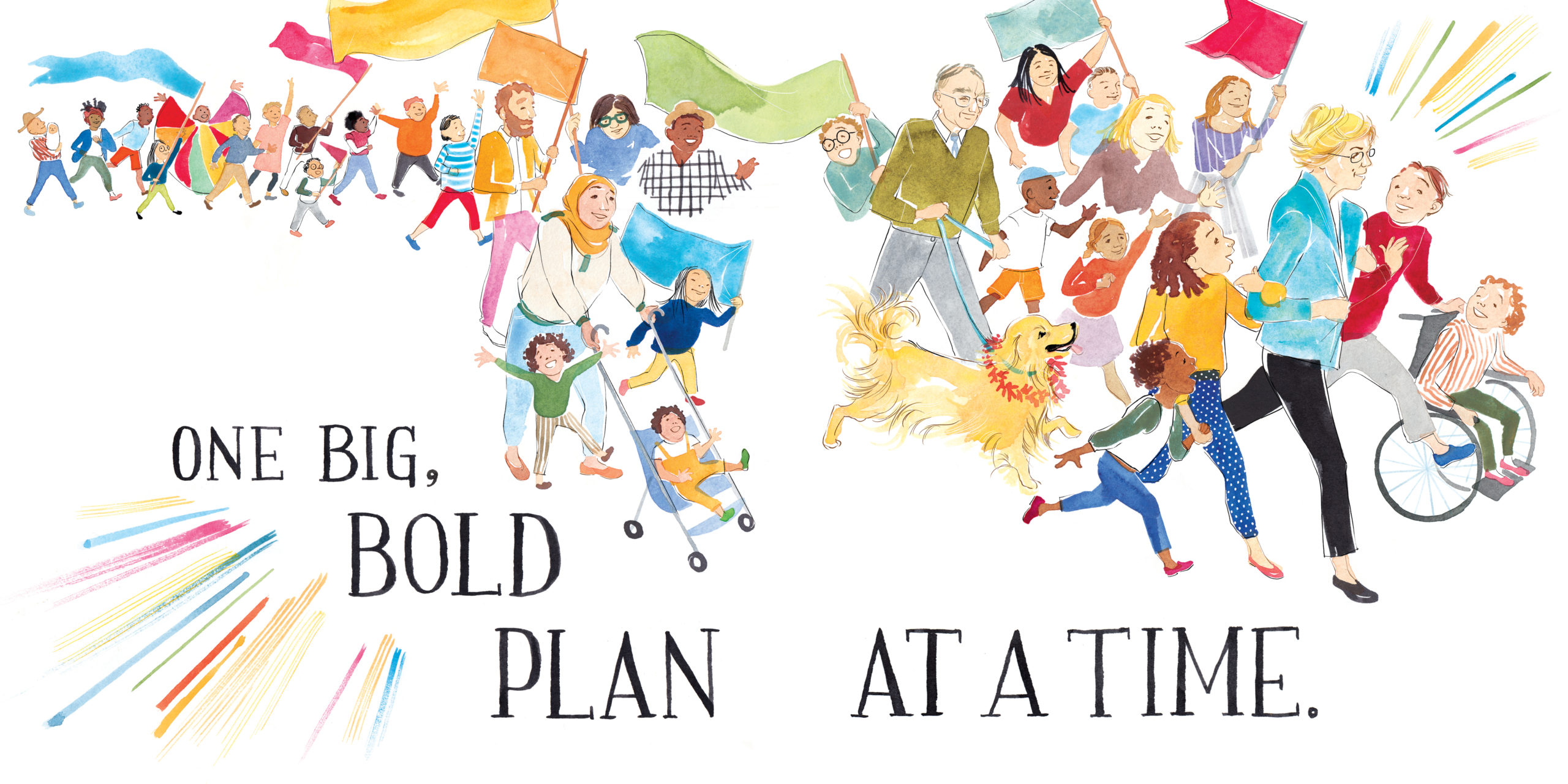 The inspiring image above is a spread from my upcoming picture book, ELIZABETH WARREN’S BIG, BOLD PLANS, illustrated by the amazing Susanna Chapman and releasing on May 5 (hooray!). These days, it often feels hard to conceive of big, bold plans. I’ll admit, some days just getting out of my pajamas feels like a victory. And for those of those parenting or teaching youngsters and attempting #AtHome learning for the first time? Hats off to you!
The inspiring image above is a spread from my upcoming picture book, ELIZABETH WARREN’S BIG, BOLD PLANS, illustrated by the amazing Susanna Chapman and releasing on May 5 (hooray!). These days, it often feels hard to conceive of big, bold plans. I’ll admit, some days just getting out of my pajamas feels like a victory. And for those of those parenting or teaching youngsters and attempting #AtHome learning for the first time? Hats off to you!
To try to help you with your big, bold plans–or even the just-getting-through-today plans–I’ve been working to create and assemble whatever materials I can that might be of assistance. I’ll continue to add to this list as I get more requests (feel free to reach out if there’s something specific you’d like!), ideas, and time. Hopefully, you can find access to the books via an online read-aloud, ebook download, independent bookstore, or your own bookshelves. I hope these resources are helpful for your #AtHome learning efforts!
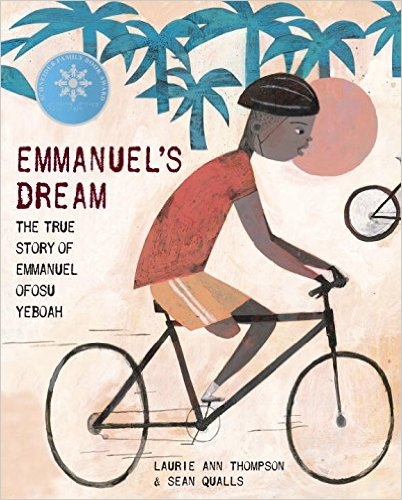
EMMANUEL’S DREAM: THE TRUE STORY OF EMMANUEL OFOSU YEBOAH
- Author “read-aloud plus” now available by request! Please email me for details.
- Download the free Emmanuel’s Dream curriculum guide, which includes CCSS alignments, critical thinking discussion questions, and reproducible activity sheets.
- “Meet the Author” at TeachingBooks.net: Book Reading | Emmanuel’s Dream: The True Story of Emmanuel Ofosu Yeboah.
- There’s a free reproducible crossword puzzle based on the book at TeachersPayTeachers.com.
- Check out related picture books for young changemakers on my Pinterest board.

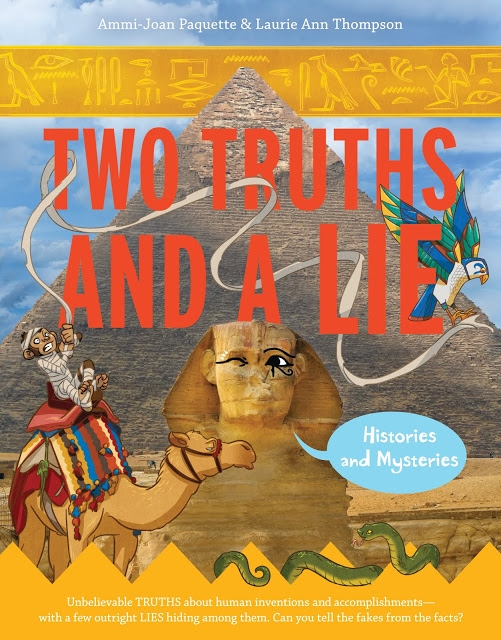
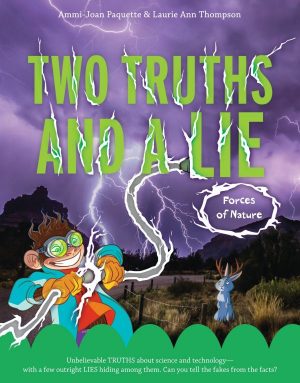 The TWO TRUTHS AND A LIE series
The TWO TRUTHS AND A LIE series
- Video: The story behind the TWO TRUTHS AND A LIE stories
- Video: Introduction to TWO TRUTHS AND A LIE
- An Educator’s Guide to Support Information Literacy
- The Two Truths and a Lie: STEM Game and Research Activities
- A Two Truths and a Lie: It’s Alive! Word Search Puzzle
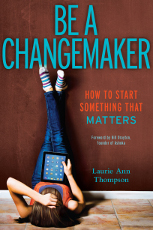 BE A CHANGEMAKER: HOW TO START SOMETHING THAT MATTERS
BE A CHANGEMAKER: HOW TO START SOMETHING THAT MATTERS
- Read my blog post on how to Empower kids and teens during COVID-19
- Download the FREE Be a Changemaker Workshops guide
- Watch the You Can Be a Changemaker video webinar.
- Watch the Be a Changemaker intro video.
- View or download the Common Core State Standards (CCSS) English Language Arts (ELA) Literacy strands and/or the full CCSS report here.
- Check out even more books for tween and teen changemakers on my Pinterest board
- Watch the author read-aloud video
- Download the free storytime and canine craft kit
- Watch the book trailer video
Again, my goals here are to be as helpful as possible for YOU to continue leading #AtHome learning, so please email me if there is anything specific I might be able to do, including ways to connect with your students. We’re all in this together, even while we’re apart. So, until we meet again, stay safe, #StayHome… and stay sane. xoxo
Empower kids and teens during COVID-19
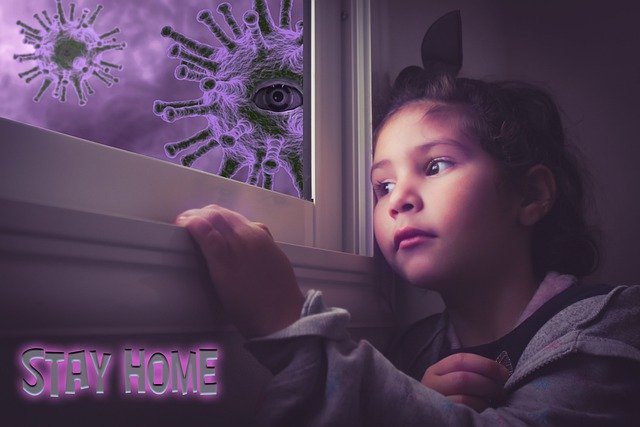
Why empower kids and teens during COVID-19? They need it!
Taking action is one important way to make a problem seem more manageable and less frightening, so getting young people involved can actually help them cope with the situation we are all facing. Giving them a purpose gives them something else to focus on besides what they’ve lost or what they’re worried about. And reminding them that we are all in this together (even while six feet apart!), can help them feel less isolated and anxious during this challenging time.
We need them.
During a crisis, we need all hands on deck to get through it as well as we possibly can. And young people have a lot to offer, even in the case of the current COVID-19 crisis. But trying to come up with ways for a young person in your life to BE A CHANGEMAKER while complying with social distancing guidelines and keeping everyone safe during this COVID-19 crisis may feel like an impossible task. It’s true that life looks very different now for most people, but there are still many useful ways for kids and teens to give back.
So, how can we empower kids and teens during COVID-19 in a safe and responsible manner? Here are a few ideas and resources for them to choose from:
-
- Do you play a musical instrument? Perhaps you can perform a “drive-by” concert to cheer up neighbors or schedule one for your apartment building. I’ve even heard of one group letting people “hire” them for this purpose, and then donating the money raised to organizations in need during the crisis — win, win!
-
- Do you have some durable markers or paint? How about decorating some rocks with positive messages to leave along the sidewalk, in building entrances, or on trails in your area? I’ve also seen a lot of fantastic chalk art on streets, sidewalks, even the fronts of houses or buildings (be sure get permission before decorating someone else’s private property!). Art, especially that with messages of hope and connectedness, can go a long way toward lifting people’s spirits these days.
- Do you have some durable markers or paint? How about decorating some rocks with positive messages to leave along the sidewalk, in building entrances, or on trails in your area? I’ve also seen a lot of fantastic chalk art on streets, sidewalks, even the fronts of houses or buildings (be sure get permission before decorating someone else’s private property!). Art, especially that with messages of hope and connectedness, can go a long way toward lifting people’s spirits these days.
-
- Write letters or draw pictures for senior citizens or anyone else who may be isolated now. Reach out to your local senior centers and ask if you can send photos of the letters and pictures for them to share with their residents.
-
- Clean your room! Seriously. Now is a great time to tackle that overdue chore. Some items to consider purging include gently used clothing you no longer wear, sports equipment you’ve outgrown, toys, books, etc. You may not be able to donate them right now, but it’ll be nice to have them out of your way now, and organizations will appreciate them when things open back up again.
-
- Check in on friends and family. Use the phone or other available technology just to see how they’re doing. Talk about how you’re doing. No matter how old or young you are, this is one that benefits everyone. It may seem trivial, but it may be just what the person on the other end needs.
-
- Be kind to your teachers. Whether your current teachers are your usual teachers, your parents, your grandparents, or an older sibling, all of this is new to them (yes, even if you are homeschooled!) and they are doing their best to help you be successful while also doing all of the other things they need to do right now, many of which are also new to them. Offer a word of encouragement, a thank you note, or a genuine smile whenever you can.
-
- Youth Service America has a bunch of other great ideas here, including holding a virtual dance-a-thon, organizing a teddy bear hunt, raising awareness for an issue you care about, and more!
-
- For teens, look into mutual aid organizations in your area and see if you can contribute. Not familiar with mutual aid? The basic idea is that everyone has something to give and that we are all dependent on one another. You can read more about the idea here, but, in short, they are networks created by individual community organizers among specific groups of oppressed people or during local emergencies like natural disasters. With the current public health crisis, however, they’ve been sprouting everywhere. Paired with the power of today’s readily accessible technology, they are an even more powerful force. There’s a massive list of existing mutual aid organizations here. If you can’t find one that fits, start your own with this Mutual Aid 101 Toolkit, and be the hero of your community!
-
- And, of course, now might be the perfect time to dream big and start making plans for how you’ll get out there and save the world when all of this is over. Find a copy of Be a Changemaker: How to Start Something that Matters and get to work!
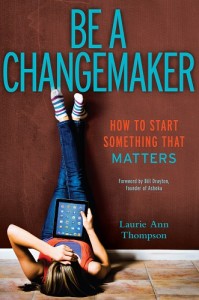
- And, of course, now might be the perfect time to dream big and start making plans for how you’ll get out there and save the world when all of this is over. Find a copy of Be a Changemaker: How to Start Something that Matters and get to work!
Whatever you do, be sure to check federal, state, and local guidelines to make sure you are complying with the most recent advice. And… stay safe, stay home!
Thoughts on Writing Poetry
I’m struggling to write a poetic picture book. To fill me with the metaphor, imagery, rhythm and meter that I’m striving for, I’ve been reading other books of poetry. Two interesting things happened during today’s readings…
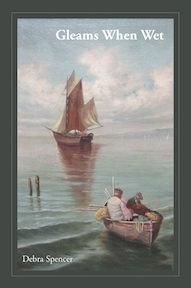
First, I was reading Gleams When Wet by Debra Spencer. I had picked it up at Half Price Books on a whim, since I’m mostly searching for ideas that have to do with water. Interestingly, it’s mostly set in the Monterey/Santa Cruz, California, area, which is where my oldest child is currently studying marine biology, so that was a fun connection. There are some beautiful and intriguing poems in here, as well as insightful commentary on life. It made for quite an enjoyable afternoon. (Yes, sitting and reading poetry all afternoon is sometimes actually my job. How lucky am I!?) What particularly struck me, however, is the inscription from the author (“To XXX, another adventurous father, with love from Debra”) and the handwritten card still tucked inside: “Happy birthday, XXX — I think you’ll enjoy this. Her poems are wonderful! See page 54! I also love Old Sailor’s Manifesto (p. 34) — and many others. Enjoy! Love, Mom” (*Note: Name changed to XXX to protect the innocent. 😉)
When I first read these words, I was instantly saddened. His mom had poured so much love into this thoughtful gift (not to mention it was personalized by the author)! How could he have given it away to end up on the shelf at my local HPB? But then I thought, selfishly, how lucky I was that he did, else I would never have happened upon it in my random HPB treasure hunt! Then I thought, maybe he read them and they just didn’t connect. It’s kind of sad that Mom missed the mark, but hey, it happens. Hopefully, he appreciated the thought, at least. Or maybe he read them and loved them, taking pictures of or typing up his favorites to file them away digitally rather than cluttering up his physical space. In the end, I’ve decided, it doesn’t matter why he didn’t treasure it. The real gift was in the giving. No matter what XXX felt about the gift or his reasons for passing it on, it warms my heart to think that his mom loved him, that she also loved words, and that she wanted to share them with him. As I struggle with my poetry project, I have often thought that perhaps it’s not worth it, perhaps it’s too far outside of my wheelhouse and I should stick to what I’m good at, perhaps no one will ever read or care about my words. Perhaps Debra thought that, too, before Mom came to get Gleams When Wet signed for her son. Perhaps, if I keep struggling, some other Mom will lovingly buy my poetic picture book for her child, and I’ll to get sign it, “To XXX, with love.”
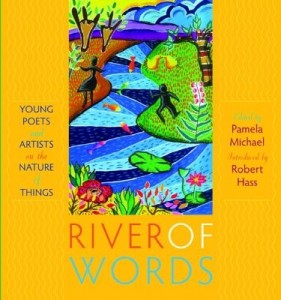
Another book that struck me was River of Words, edited by Pamela Michael. It’s a collection of poems written by young people–many as young as 6 or 7–about the natural world. And. it. is. so. good! Not only did it do exactly what I was hoping for–filling my artist’s well with even more water images and metaphors to potentially use in my own project–but it was incredibly inspiring as well. Yes, these young writers are clearly very talented, but they are certainly not professional poets. Yet, their poems sing with meaning. The depths of what they are able to say with so few words reminds me why I’m trying to complete this project in the first place, to convey something that is deep and meaningful to me to young readers. And the success the poems achieve in conveying each individual author’s essence gives me hope that perhaps my poetry can one day make that kind of connection with readers, too.
So, thank you to the poets out there struggling to make your words and meaning flow. Thank you to publishers who still believe in creating beautiful poetry books for children and adults. And thank you to everyone who buys books to share with those you love. 💛
Blog Tour: Growing Up Gorilla by Clare Hodgson Meeker
Today I’m thrilled to be a part of the blog tour for Clare Hodgson Meeker’s new book, Growing Up Gorilla!
GROWING UP GORILLA
by Clare Hodgson Meeker
Millbrook Press/September 3, 2019
Grades 3–6, 48 pages
Here’s what the publisher says about Growing Up Gorilla:
This heartwarming true story chronicles what happened after a mother gorilla gave birth for the first time and then walked away from her newborn baby at Seattle’s Woodland Park. The dedicated staff worked tirelessly to find innovative ways for mother and baby to build a relationship. The efforts were ultimately successful, as baby Yola bonded with her mother and the rest of the family group.
And here are my thoughts about Growing Up Gorilla:
This beautifully photo-illustrated nonfiction is both meticulously researched and lovingly told. Meeker does a fantastic job of bringing this true story to life in a very kid-friendly way, bringing us into the world of both the gorillas and their keepers in a way that keeps readers thoroughly absorbed at all times. There is something for everyone here, with plenty of drama and suspense as well as heart-tugging emotion and (spoiler alert!) a happy ending.
The book also contains a table of contents and extensive backmatter, including an author’s note, further reading/websites/videos, glossary, index, maps, primary source quotations/images, sidebars, and more.
AND, here’s my interview with the author of Growing Up Gorilla, Clare Hodgson Meeker!
LAT: Can you describe your writing process? Did Growing Up Gorilla require any particular changes to how your typical process?
CHM: Normally I don’t start writing a book until I’ve worked out the arc of the story from beginning to end and done enough research and interviewing to feel ready to tell the story with excitement and confidence. Preparing a proposal helps me organize my thoughts — outlining the story with chapter summaries helps me think in scenes and how I’m going to thread in the factual information I think is relevant. Once I have that, I can begin writing my first scene of the book and continue chronologically through the story. The only change in my writing process with Growing Up Gorilla was having to write a full draft before interviewing the gorilla keepers who were directly involved with helping Yola and her mother Nadiri bond. I was able to interview them once I had a publisher on board, which satisfied the Zoo’s requirements. However, the zoo staff did give me some access to the Keeper’s Daily Record book, which included their notes of what happened during the first few months after Yola’s birth, to help me write the first draft.
LAT: What do you find most challenging about writing for kids? About Growing Up Gorilla in particular?
CHM: I’ve taught writing in the schools to children for many years. When we talk about plot and what makes a story interesting, kids agree that there needs to be a problem that has to be solved and a main character they can relate to who wants something and/or has to solve the story problem. In writing a book about a baby gorilla whose mother initially refused to care for her after her birth, my challenge was to get children to relate to these characters and care about their problems. Children’s books should be action-oriented and avoid too much description or flashback. I had to choose carefully the places where I slowed down the action to describe a scene in more detail — like the night Nadiri went into labor where I wanted to show the close relationship between Nadiri and the infant care specialist who had hand-raised her at birth after Nadiri’s mother rejected her. I don’t believe in writing down to a certain grade level or limiting word choice to a grade-appropriate list. I think about presenting the story in the most natural way I can as though I am telling it to the reader sitting next to me.
LAT: What authors and or books do you most admire, and why? Did you have any specific mentor texts that you looked at for Growing Up Gorilla?
CHM: Katherine Applegate’s middle-grade novel The One and Only Ivan and her picture book Ivan: The Remarkable True Story of the Shopping Mall Gorilla are fantastic examples of a gorilla character and story that children can relate to and empathize with, in both a fictional version and in a more condensed nonfiction format.
CHM: I am also a big fan of Sy Montgomery, who has written many of the Scientists in the Field series books published by Houghton Mifflin Harcourt. Her voice is so distinctive as she takes you on an adventure shadowing biologists and naturalists who are studying animals in the wild around the world and weaving in fascinating facts about them.
LAT: Outside of the writing itself, what kinds of things do you do that you feel help your writing career?
CHM: I am a life-long learner. I love taking classes in different writing genres, from poetry and picture books to essay and novel writing. Hugo House in Seattle is a wonderful place to take classes, get inspired, and meet others in the writing and reading community. I also enjoy writing conferences where I can get tips on writing and the business of writing listening to editors and talking with fellow children’s book authors.
LAT: What advice would you give to someone who is interested in writing nonfiction for kids?
CHM: Children’s nonfiction is a very popular genre today, especially STEM subjects (science, technology, engineering, and math). My advice is to choose a topic that you are excited about and willing to immerse yourself in, so that you can feel confident writing a story that kids and publishers will love. Think of creative ways to present your book idea, like Laurie Ann Thompson did in her Two Truths and a Lie series. It also helps to include themes that reflect the current elementary science or humanities curriculum standards so a publisher can market your book to schools and libraries.
LAT: Wow, thanks so much for that shout out, Clare! And thanks so much for including me in the blog tour for Growing Up Gorilla and for taking the time to do this interview for us.
Please check out the rest of the Growing Up Gorilla blog tour stops on the schedule below!
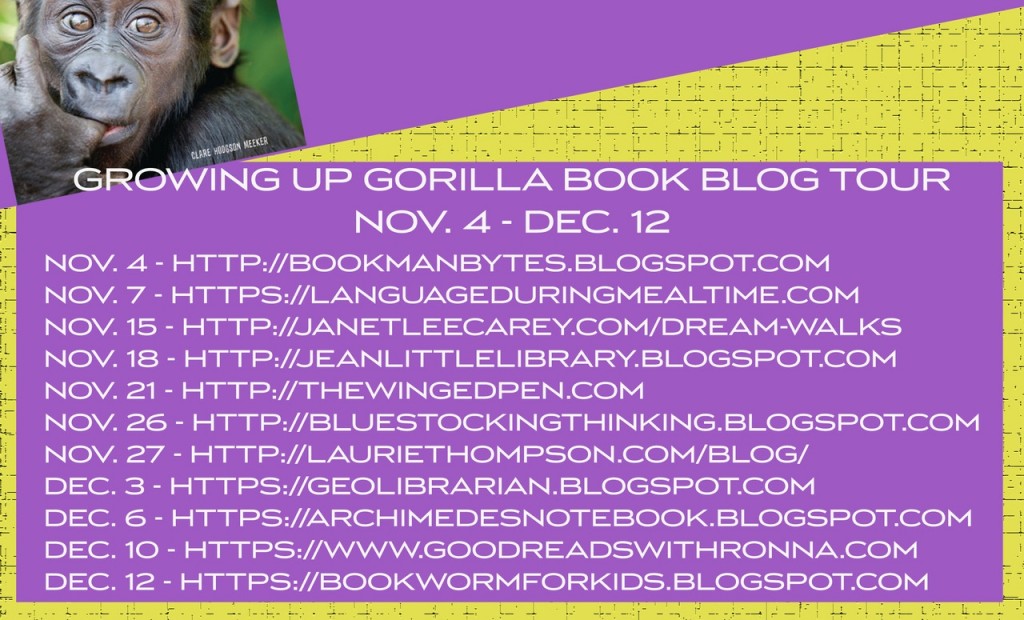
Emmanuel’s Dream wins CA Young Reader Medal!
A few weeks ago I was honored to travel to Pasadena, CA, to the California Library Association conference to receive the California Young Reader Medal for Emmanuel’s Dream. This is a very special award because the winning book in each category is chosen by the kids themselves.
First, the award tea itself. There were teas and sandwiches and all kinds of yummies, and look at the lovely decorations:


It was fun hearing the other speakers and getting to chat with the librarians during the book signing. And it all came with an honest-to-goodness medal!
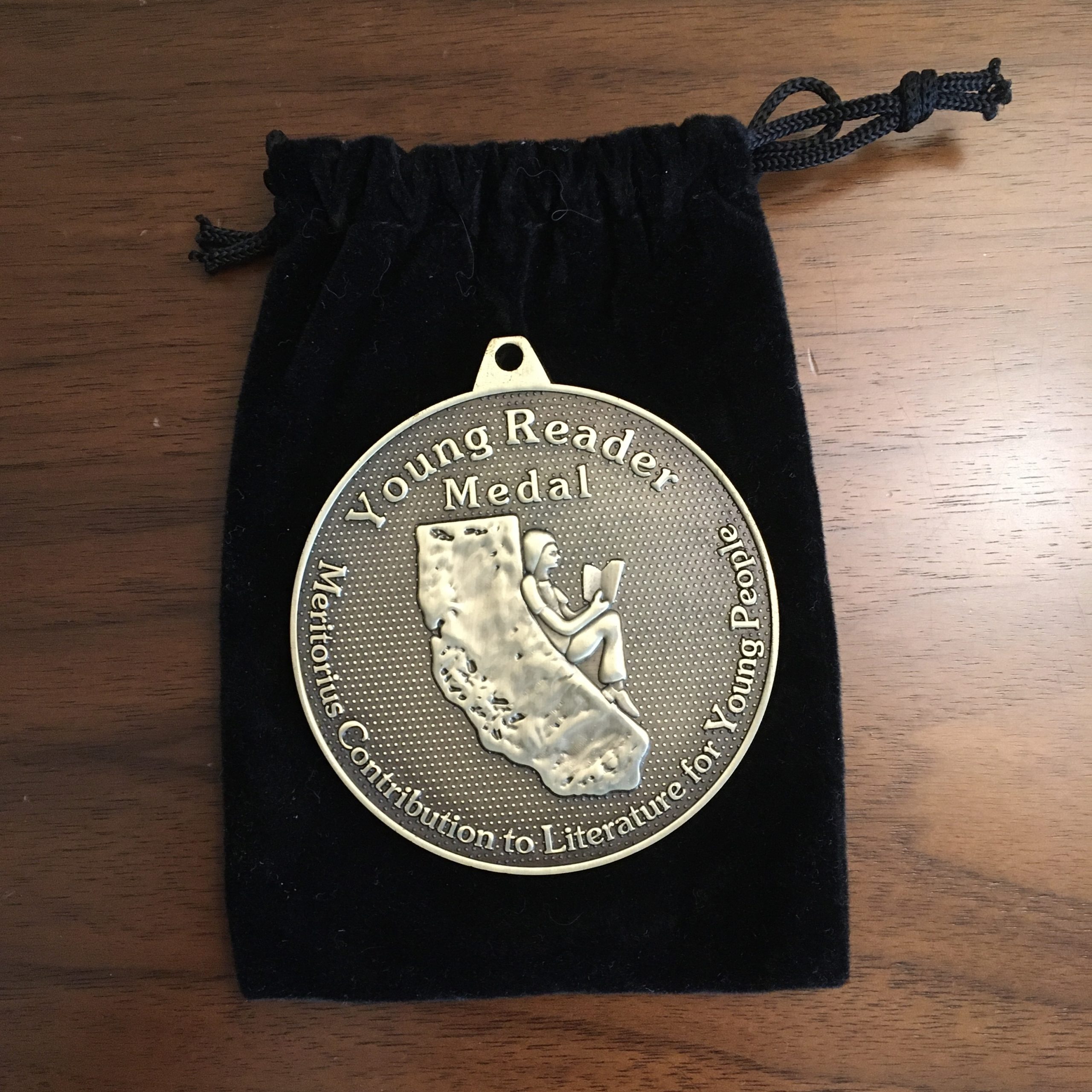
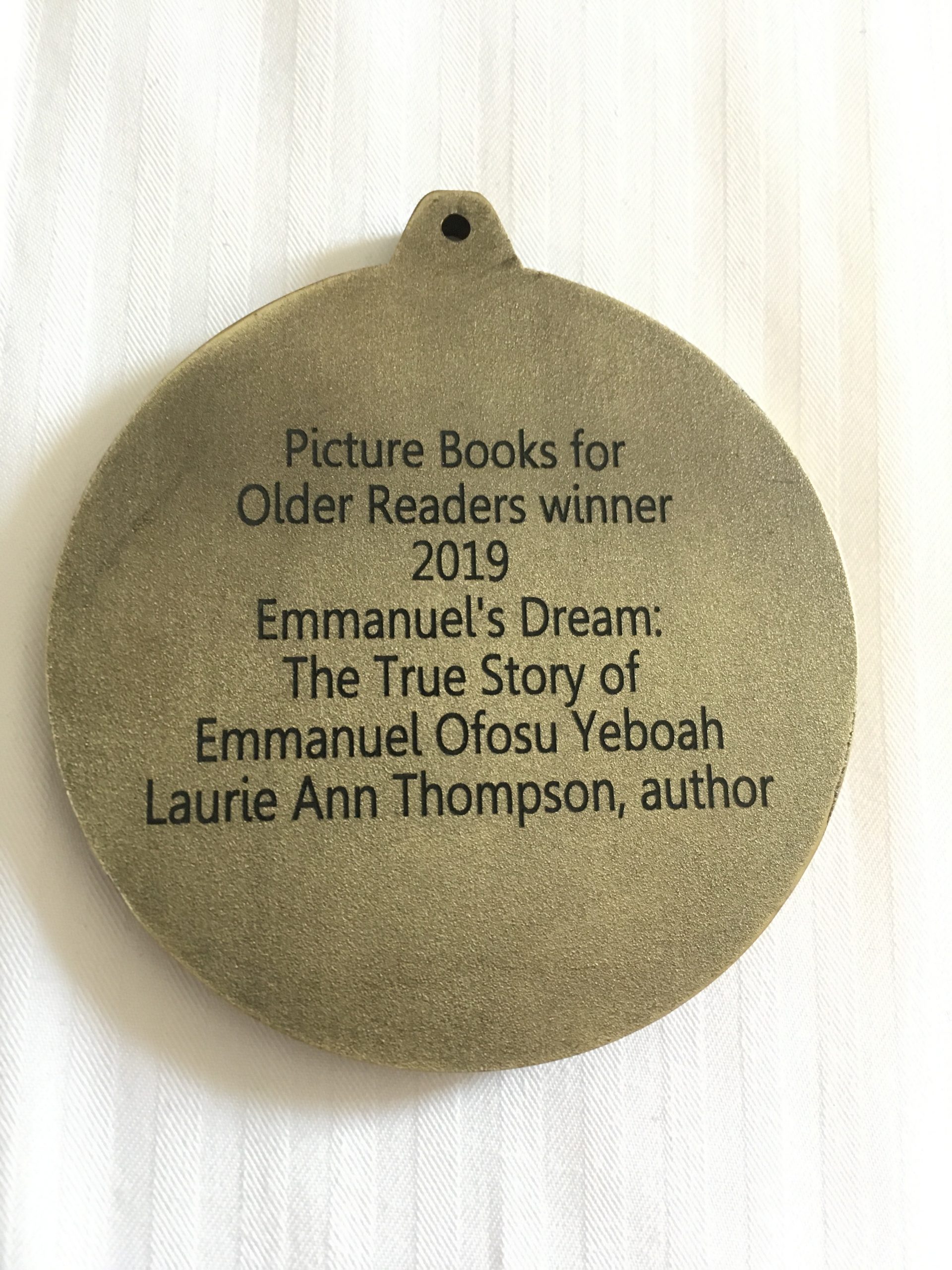
After the ceremony, I had some time to walk around and explore the city. The weather was perfect, and Pasadena is lovely.
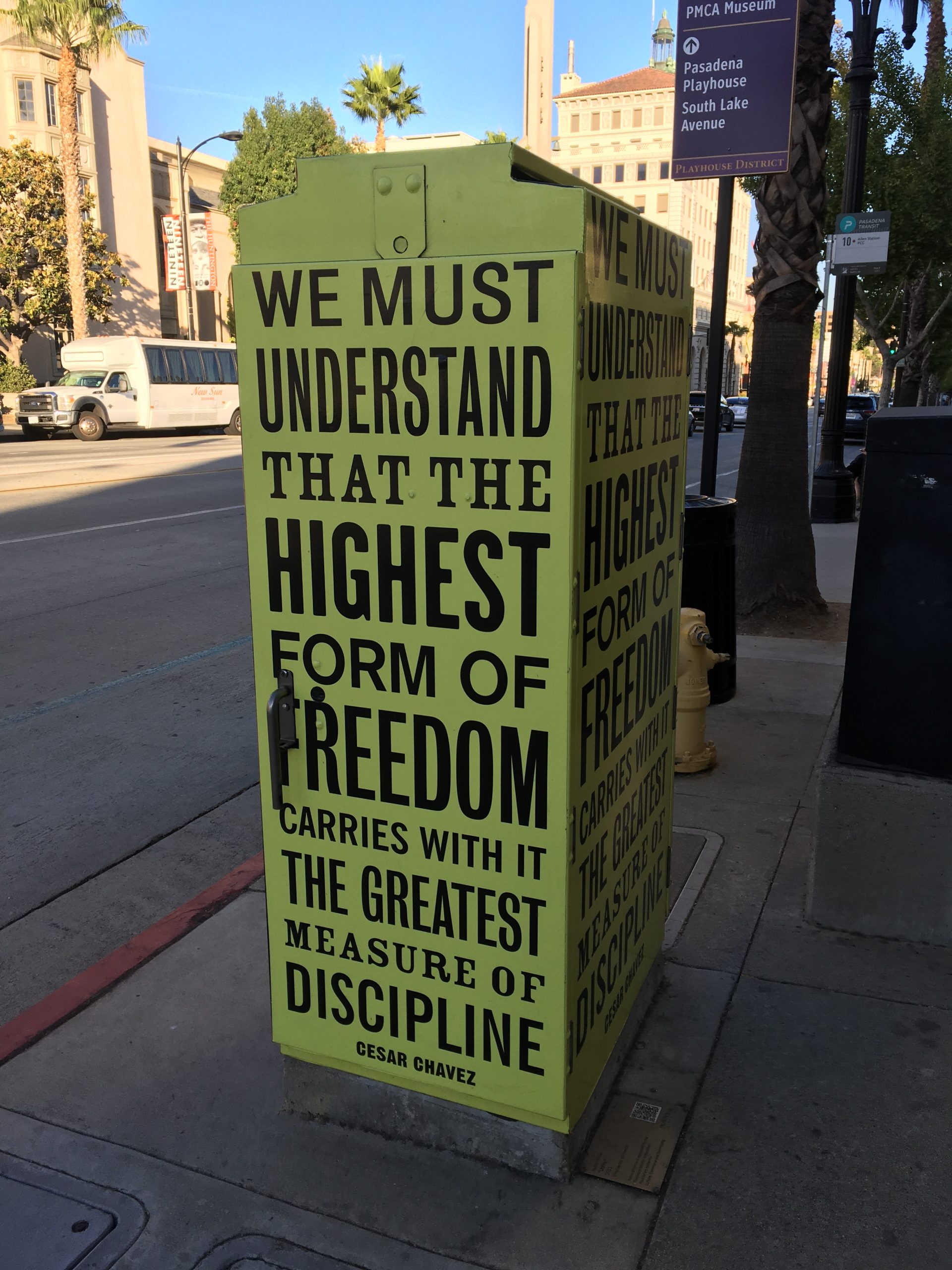
I stumbled upon a street fair in honor of Day of the Dead. There were many talented artists selling their wares, vendors, music, dancing, a puppet show, and chalk art! There were a lot of people out and about enjoying the festive atmosphere.
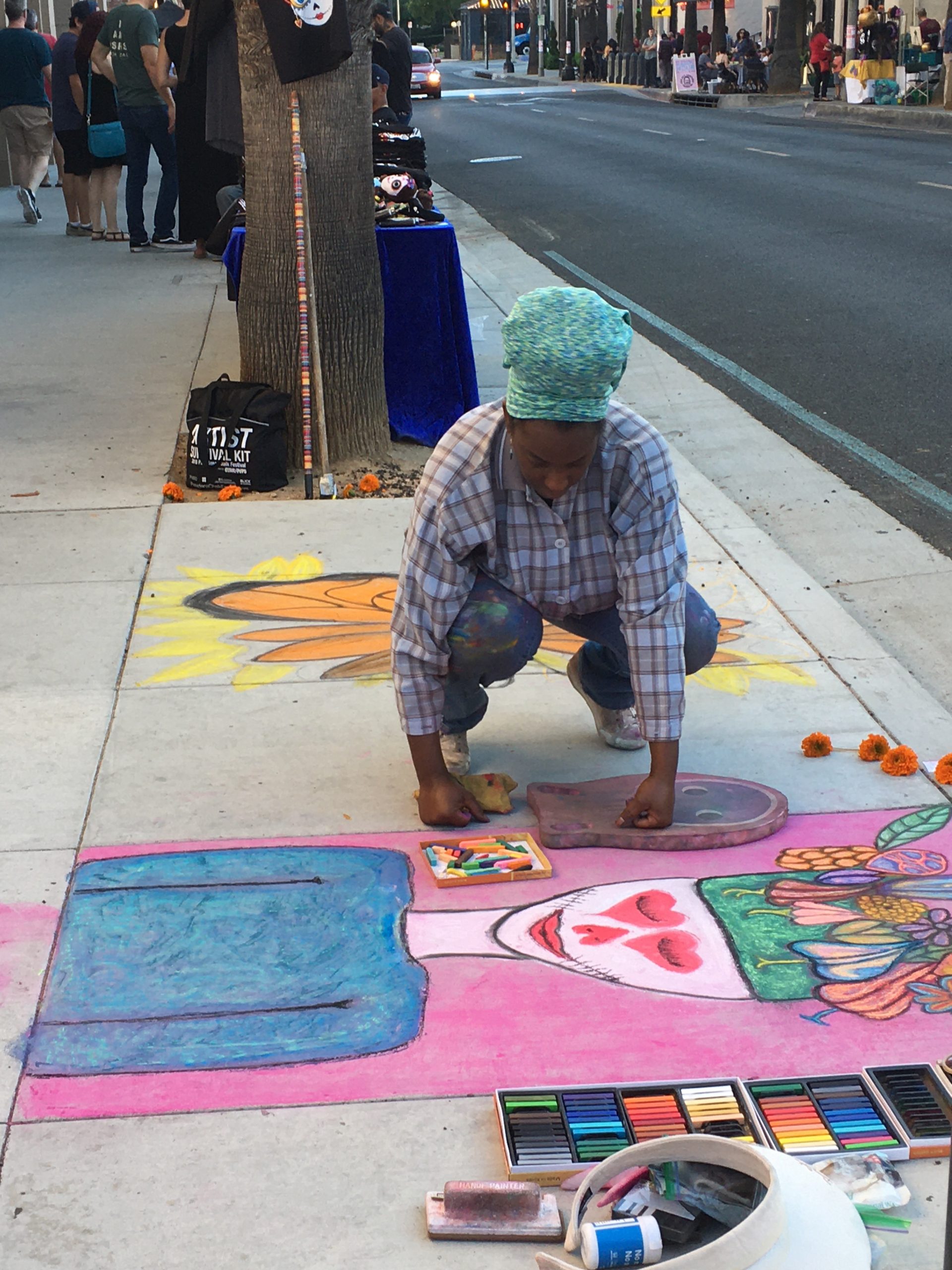

I, of course, had to visit the local independent bookstore, Vroman’s!

The nice young women working there recommended Trejo’s Cantina for dinner, and it was so delicious!
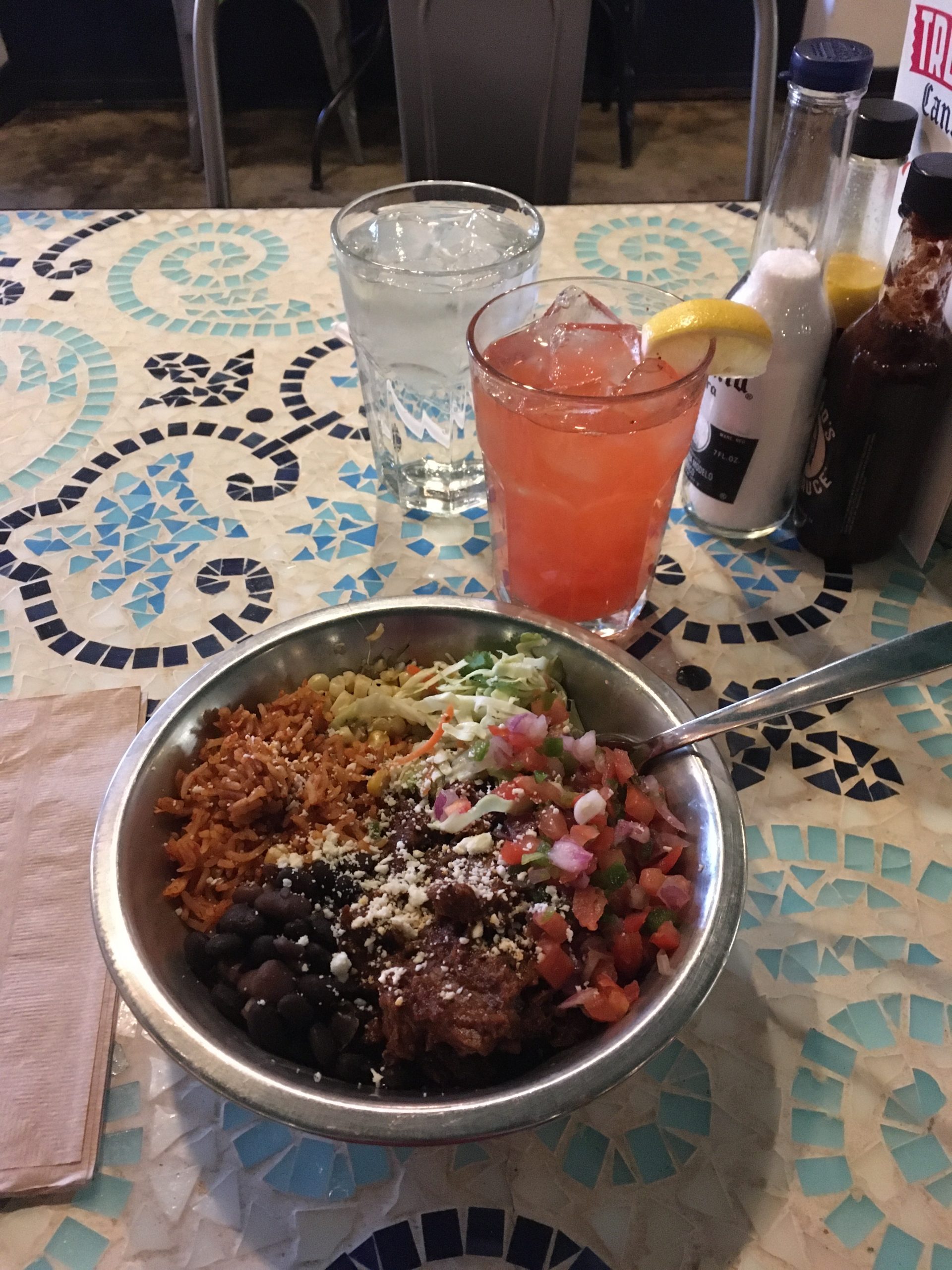
The Vroman’s gals also told me not to miss the new ice cream shop in town, Wanderlust, which features flavors based on exotic travel destinations. They had me at ice cream! It was well worth the walk. I chose honey lavender, and it was divine.

As you can see, it was an amazing trip. Thank you so much, California young readers! 🙂
Happy book birthday to Forces of Nature!
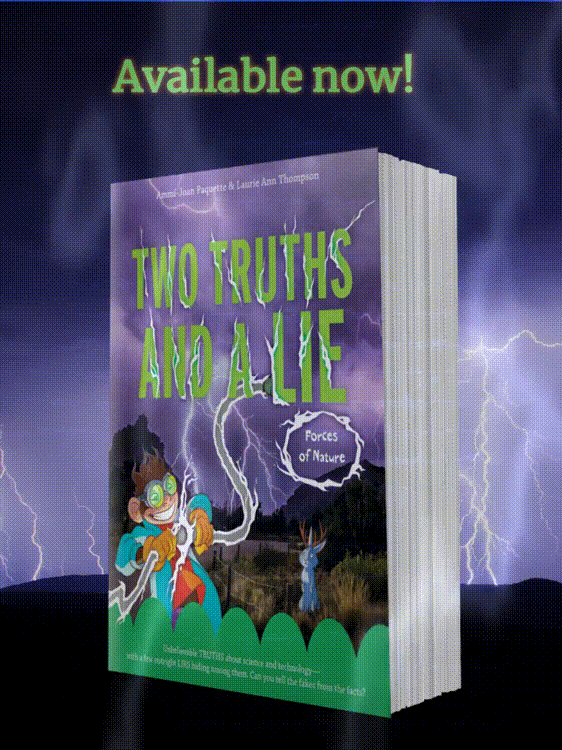
TWO TRUTHS AND A LIE: FORCES OF NATURE, the third book in the series, is finally here! So, what’s this one about? Here’s an overview:
Crazy-but-true stories make this acclaimed nonfiction series perfect for fans of curiosities and wonders—and anyone looking to explore ways to separate fact from fiction.
Did you know studies have shown that too many fidget spinners spinning in the same direction could potentially have an adverse effect on Earth’s gravitational field? Or that there’s a company that can turn your deceased loved one’s remains into a diamond? Or that the loudest recorded sound in history was made by the eruption of a volcano in 1883, whose echoing blast circled the planet at least three times?
Welcome to Two Truths and a Lie: Forces of Nature! You’ve heard of the game: Every story in this book is strange and astounding, but one out of every three is an outright lie. Picking out the fakes isn’t as easy as you think, however. Some false stories are based on truth, and some of the true stories are just plain unbelievable! Don’t be fooled by the photos that accompany each story—it’s going to take all your smarts and some clever research to ferret out the truth.
From a man who gave himself an appendectomy to radio signals from other planets to eagles that have been trained to take out spy drones, the stories in this third installment in the Two Truths and a Lie series will amaze you! Just don’t believe everything you read.…
(Walden Pond Press/HarperCollins, June 2019)
Creating a book is a highly collaborative process, and this book has had an incredible team working on it from day one. Many, many thanks to my co-author, Ammi-Joan Paquette; our agent, Erin Murphy; our editor, Jordan Brown; and all the wonderful folks at Walden Pond Press and HarperCollins. It’s been an honor and a joy to work with you all on this book and the entire TWO TRUTHS AND A LIE series!
Buy it now, at your local independent bookstore, or anywhere books are sold!
What I’ve Been Up To This Month
The month isn’t even over yet, but so much has been packed into the last few weeks it feels more like two months already! That’s not exactly an excuse for neglecting the blog, but, you know, life happens. Anyway…
Beachside Nonfiction Workshop
I started out the month at the Beachside Nonfiction Workshop with Candace Fleming & Jennifer Swanson. It was amazing! The faculty were all stellar, the location was gorgeous, and the attendees were lovely. It was fun hanging out with other nonfiction geeks for an entire weekend. We all struggled to answer the “So, what do you write?” question, however, since we can usually just get away with “Nonfiction,” and have that be the end of it! I didn’t take nearly enough photos, but here’s the view from my hotel balcony…

Yes, it was hard work. There were a lot of sessions, and they were mostly master level, plus networking and critiques. I came away with so much useful information and new ideas to apply to my works in progress. There were obviously some other perks, too!
Seattle Reading Council Appearance
In the middle of the month, some of the members of my critique group (and all agency-mates at Erin Murphy Literary, as it turns out!), did an appearance at the Seattle Reading Council. It was a billed as a “Books and Chocolate” event… what could be better?! We each talked about our books and process and then took questions. The crowd was mostly teachers and librarians, so it made for a wonderful evening of sharing book love (and chocolate!) among likeminded new friends.

School visits
I had an elementary school visit where I got to talk to several third-grade classes about my writing journey, grit, and writing with emotion, as well as several fifth-grade classes about evaluating sources and spotting fake news. It was an awesome visit with super-engaged audiences, but alas, no photos. You’ll have to take my word for it!
I have another visit coming up early in June (the last one of the school year!), so I’ve been making sure everything is ready for that one, too.
SCBWI-WWA Spring Conference
Finally, I attended and helped with the SCBWI Western Washington’s spring conference, Imagine That! It was a great weekend: hearing from inspiring speakers, getting feedback on one of my works in progress from a powerhouse editor, and catching up with author and illustrator friends in the industry. I’m still soaking it all up and processing what was said! Good stuff.
Book Releases!
Along with all of that I’ve been getting ready for the Two Truths and a Lie: Histories and Mysteries paperback release on May 21 AND preparing for the upcoming new release of Two Truths and a Lie: Forces of Nature on June 25th! I’ve designed and ordered postcards and swag, scheduled social media announcements, and made other plans to get the word out.


Works in Progress…
And, of course, there are those works in progress, too! Earlier this month I submitted both a nonfiction picture book revision and a graphic novel proposal to my agent. I’m currently revising a nonfiction picture book, a fiction picture book, and a middle-grade nonfiction manuscript. I’m also working on a brand-new nonfiction picture book draft and a young-adult nonfiction proposal. Busy, busy!
Yes, I do love my job. More so every day, in fact! =D
Happy National Trivia Day!

It may itself be a little-known fact, but January 4th is National Trivia Day! To celebrate, I thought I’d post some trivia tidbits from Two Truths and a Lie: Histories and Mysteries. Remember, ONE of the claims in each set of three below following is false. Can you figure out which one in each trio is the fake trivium? (Did you know trivia is the plural of trivium?)
A.
- There’s an abandoned cruise ship loaded with crazed, cannibal rats drifting around somewhere in the Atlantic Ocean. Beware!
- A banyan tree in Pakistan was put under arrest by a British army officer in 1898 and is still in chains today. Pardon, anyone?
- It’s illegal to chew gum in Singapore.
B.
- Ben Franklin wrote a treatise on why scientists should try to find a way to make farts smell better.
- Dog Island is an island oasis dedicated to letting dogs live out their wilder natures, undisturbed by humans. Be free, Fifi.
- There’s an annual festival in Spain centered around throwing tomatoes at people. Food fight!
C.
- The oldest known dental fillings date back to between 12,740 and 13,000 years ago, and they were filled with, essentially, tar. Ew.
- It’s illegal to own a pet turtle in Iceland, and 1 in 10 children there grow up to become authors.
- I was once trapped in an elevator, alone, overnight. Scary!
If you don’t know all of the answers, go do some research and see if you can figure them out! But be careful… things might not always be what they seem at first glance, and truth often is stranger than fiction.
For even more trivia fun, check out this post from MentalFloss on National Trivia Day last year. I especially love the one about Ben & Jerry’s ice cream. (I’m a huge fan of their new Urban Bourbon flavor!)
If you enjoyed these true (and not so true) trivia facts for National Trivia Day, or want to check your answers, make sure to check out the book: Two Truths and a Lie: Histories and Mysteries!
Do you have any favorite trivia tidbits? Please post them in the comments below (and be sure to warn us if they might not be 100% true)!
Happy holidays (and a gift idea)!
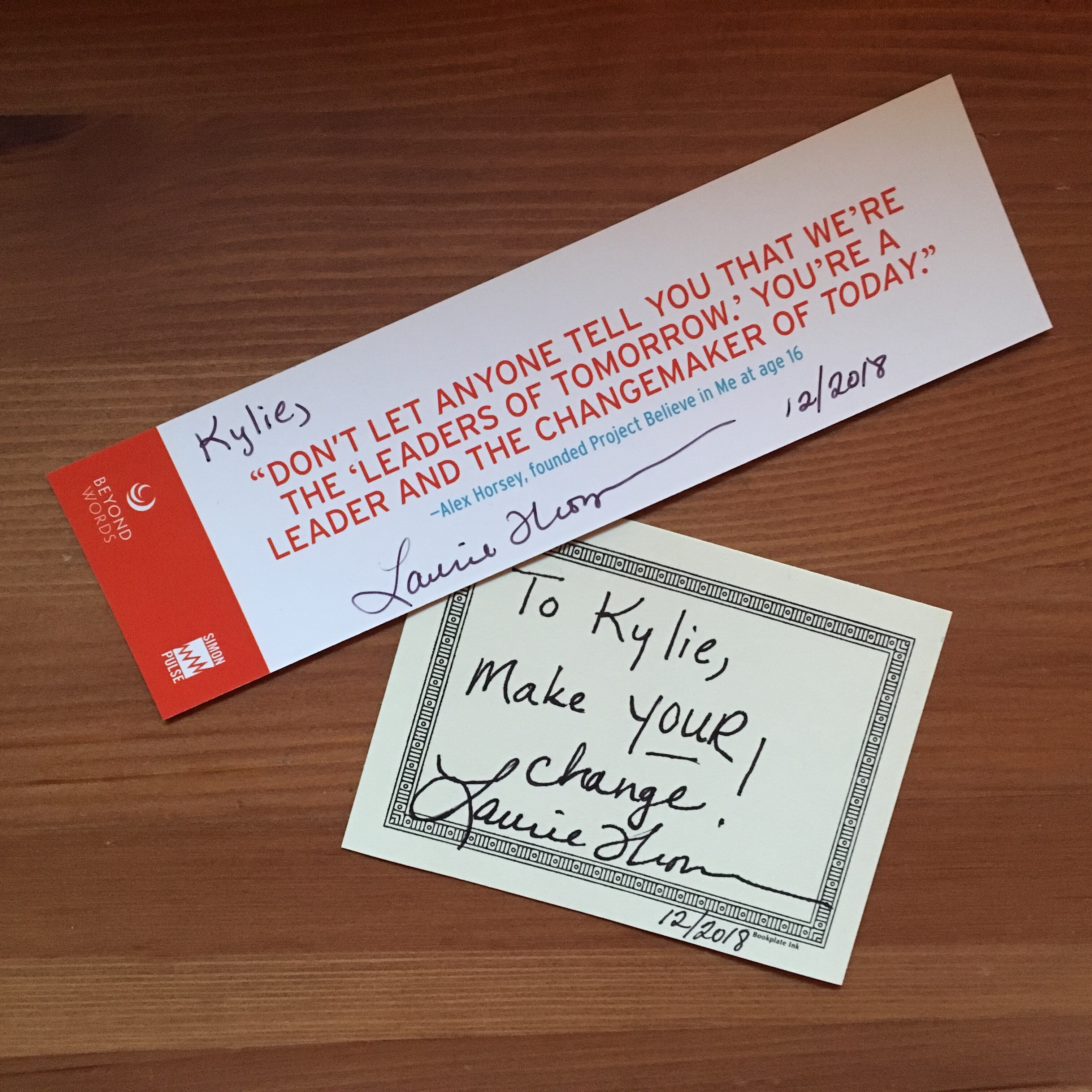
Are you buying any of my books to give as a gift this holiday season? If so, thank you!
I’d be thrilled to send you a signed bookplate and some book swag for you to include with your gift. Just send an email to laurie@lauriethompson.com with the details (which book, to whom it should be personalized, and what mailing address you’d like it sent to), and I’ll pop them in the mail for you ASAP.
And, again, thank you! It’s like giving a gift to me, too. =D
